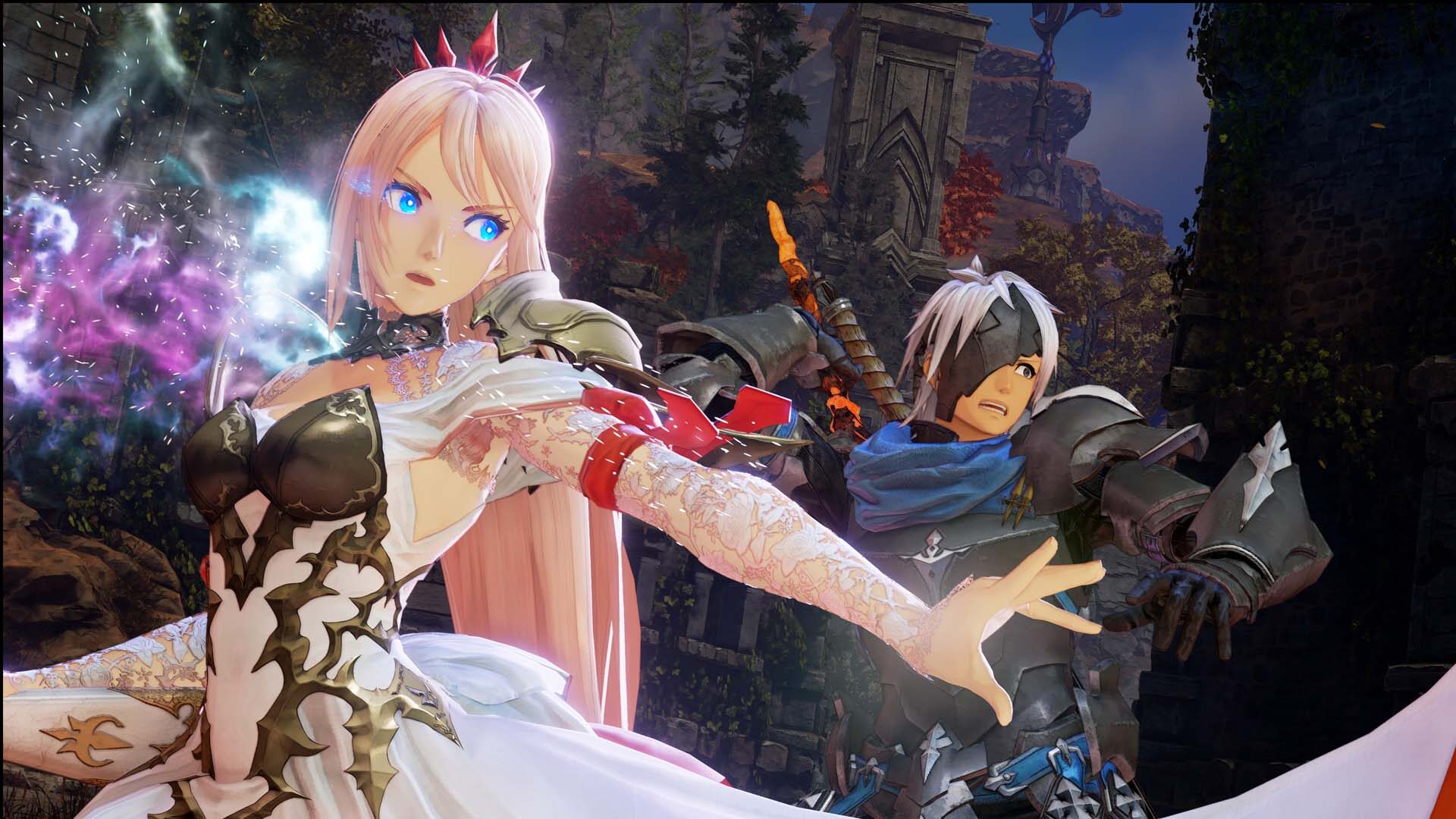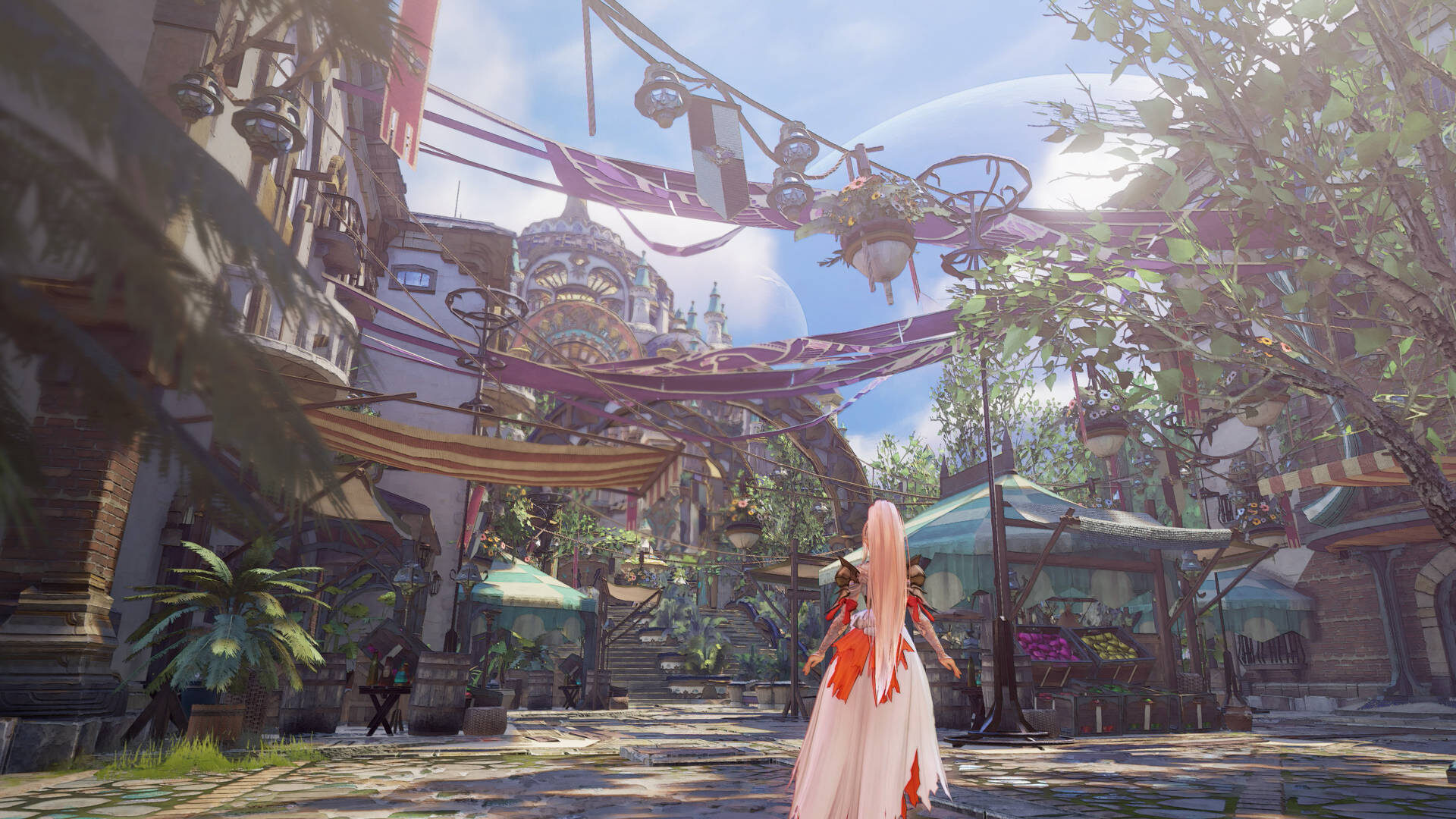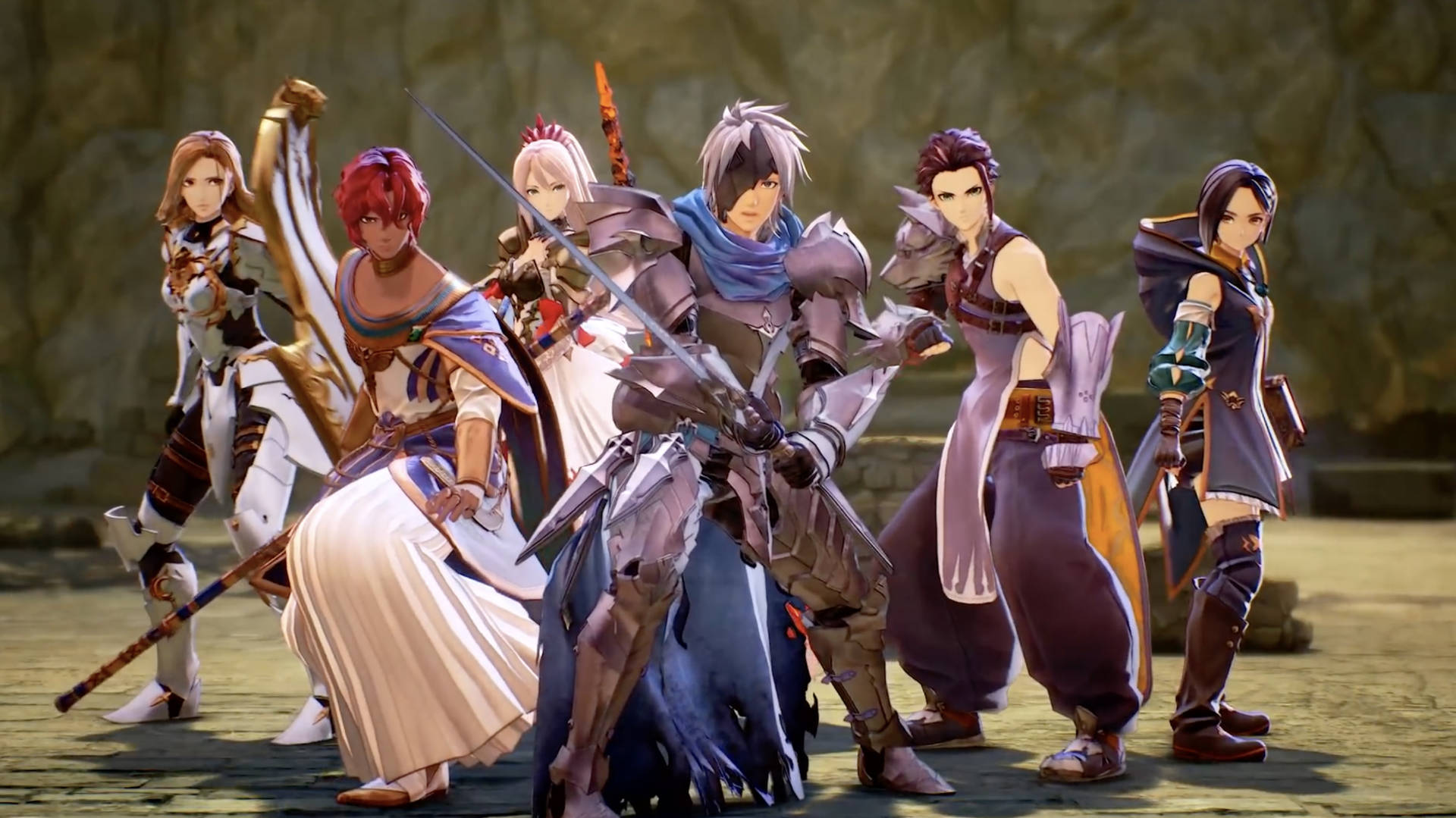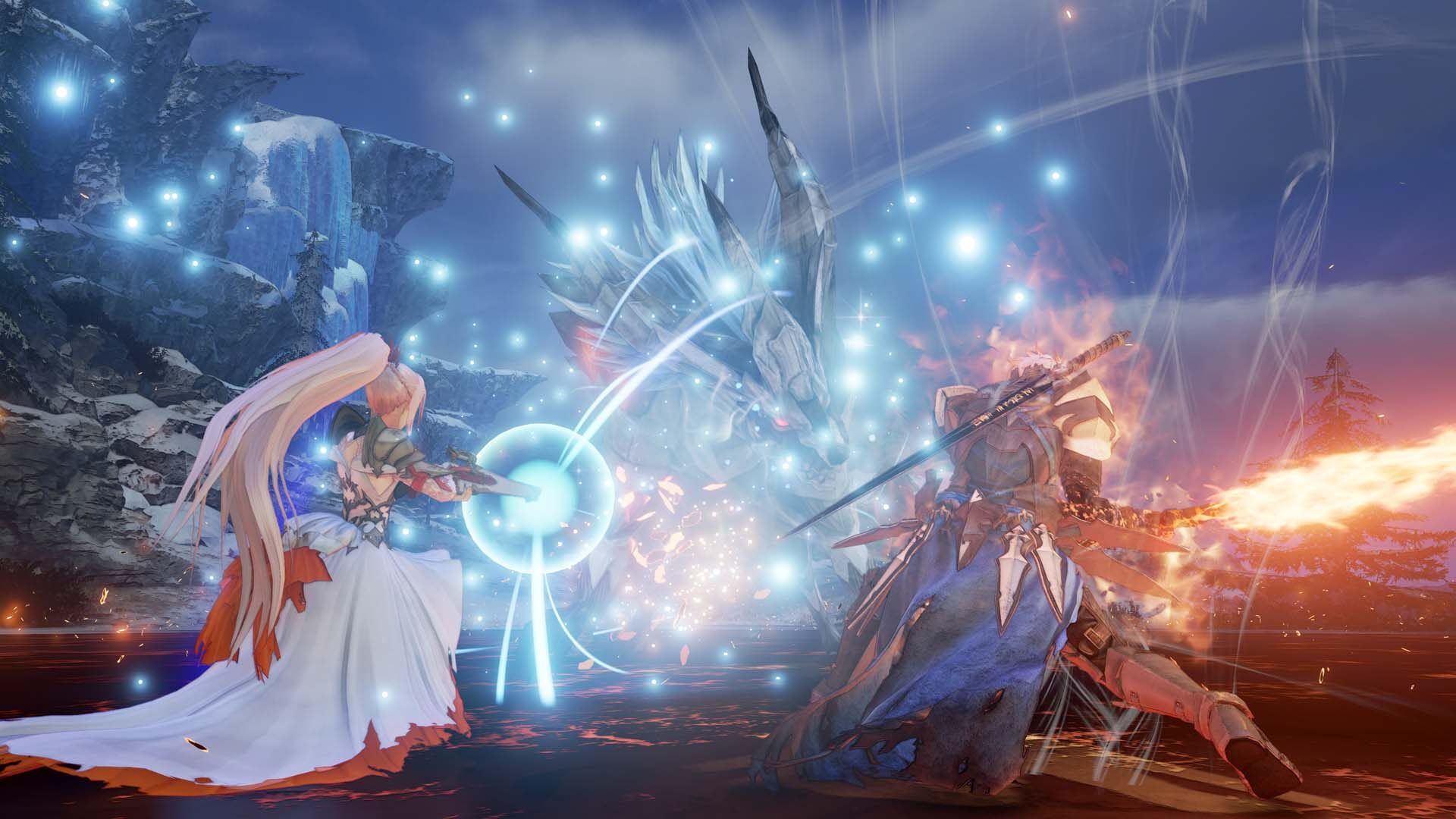My introduction to Bandai Namco’s Tales series came thanks to 1998’s Tales of Destiny on the original PlayStation. While it wasn’t the first game in the franchise, it was the first to come to the West, and when it launched, it caught my interest pretty quickly. Although Japanese RPGs were finally coming in large numbers to our shores, Destiny brought a fresh take on the subgenre with its more action-oriented battles. And, as a plus, the game’s character designs came from Kousuke Fujishima, whose work I’d come to love thanks to his Oh My Goddess! manga series.
The problem is, unlike other franchises like Phantasy Star, Final Fantasy, or Shin Megami Tensei, Tales and I grew apart just as quickly as we’d come together. By the time Bandai Namco was pumping out Tales games on a consistent schedule in the PlayStation 2 era, I had moved on to other options.
It was never one specific thing that cooled my interest in playing a Tales game. Instead, it was more my changing preferences when it came to Japanese RPGs in general, my growing dislike for certain types of storylines and main characters, and an ever-expanding selection of other genre offerings that catered more to my tastes. And, while I’ve been the main editor to focus on covering Japanese games in my tenure here at EGM, I’ve had multiple coworkers who actually enjoyed the Tales series, so it’s been easy to just pass the games along and not give their quality any further thought.

I’m telling you all of this because it helps me to emphasize just how big of a deal it is when I say that, for the first time in over 20 years, Tales of Arise has me genuinely excited for a Tales game.
I know I’m stepping into some potentially delicate territory here, but as a fan of JRPGs since my childhood, I’ve grown concerned with the lack of progress too many of them seem to be facing. I mean, sure, you’ve got Final Fantasy, which has morphed into a hybrid of Japanese gaming, Western RPGs, and Hollywood movies, or Dragon Quest, which has perfected the balance between old-school themes and new-era gameplay. Beyond big names like those, though, too many other examples feel like they’ve been treading water for years—and it’s been hard to watch franchises I legitimately love stagnate so badly.
When Bandai Namco first unveiled Tales of Arise, something instantly felt different about it. It’s not that other recent Tales games have been cheap, or lazy, or any of those other buzzwords people will pull out when they don’t like something. It’s just that, in its debut, Arise seemed to promise a true next-generation JRPG experience—not in terms of the consoles it was on, but the effort and ambition that was being put into it.

There is no singular element of the game that has caught the attention of people more than its visuals, and that’s for good reason. The graphical style and artistic flair the team at Bandai Namco is putting into the game make it feel like something we’ve never seen before, at least for those who can appreciate what’s going on here beyond “looking anime.” Visuals have long been a weak point for many JRPGs as technology—and expectations—have advanced, so the work that’s going into Arise is incredibly important and impactful, even if it doesn’t affect gameplay in the slightest.
I recently got to spend around 45 minutes going hands-on with Tales of Arise over the streaming gaming platform Parsec, and even as video compression and bandwidth hiccups did the game no favors, it remained a sight to behold. One of the dreams of Japanese-developed projects has been reaching the point where games could look like an anime or manga come to life. In examples like Dragon Ball FighterZ, we’re getting there when it comes to anime; now, in Arise, we’re closer to the higher line detail and artistic complexity of Japan’s comics industry than most attempts I’ve seen before. In the time that I was playing, I always knew it was still just a game—but even while suffering from the visual degradation of streaming, it was easy to almost forget that sometimes.
If I had high expectations for its visuals going in, one aspect of Tales of Arise I pinned no hopes on was its cast of characters. Now, we still don’t have a lot of details on either the main duo nor the teammates they’ll meet along the way, so I know I risk jinxing everything with what I’m about to say. But—I think I might have zero complaints with the cast so far. Sure, co-main character Shionne’s outfit is a little silly compared to her heavily-armored male counterpart, Alphen. Beyond that, though, many of these characters actually look like adults, in that they might at least have a “2” as the first digit in their age. The two who seem the youngest, Rinwell and Law, look to me as if they’re in their mid to late teens—which is often the older end of the scale for a lot of JRPG protagonists. My two favorites so far are the badass (and actually fully armored) female shield knight Kisara, and the “oh, lord, why is he so hot” magic-wielding Dohalim. I like everything I’ve seen up to this point about every main cast member of a Tales game, and I don’t know how to feel about that.

The one constant of the Tales games (at least from my knowledge) is that they all typically have great—if not at least good—battle engines, and Tales of Arise seems to be no exception. It’s hard for me to say too much about combat coming out of my demo, given that I was streaming the game (and thus there was some latency in the action), and that jumping into RPG combat without all of the cumulative gameplay knowledge you’d typically have up until that point is always difficult. Still, my anticipation for Arise was only heightened from what I got to play. Not only is the action fast and frenetic, and the special team-up moves satisfyingly flashy, but there seemed to be some real depth in the difference between characters. I initially chose to control Kisara in combat, the tank of the group who is more about close-quarters melee attacks, digging in defensively, and slower, more methodical tactics. Shionne, meanwhile, is her polar opposite, unleashing a flurry of fast, long-ranged attacks with her gun, while trying her best not to get anywhere close to the enemy.
I got but a taste of a completely random segment of Tales of Arise in my hands-on session with it, and it was nowhere near enough to give you a deeper analysis of where all of the gameplay, world, and story pieces are at at this point, nor what exactly you should expect when the game launches this September. What I can say, in absolute honesty, is that I am looking forward to Tales of Arise with an enthusiasm and excitement I have felt for few other JRPGs in recent years.
May that enthusiasm and excitement be misplaced? Sure. Could the game still fall into many of the subgenre trappings that I hate? Absolutely. I truly do not know what kind of experience this’ll be in the end, or if it’s the game that’ll get me back into the Tales series—but I am unquestionably eager to find out.


Mollie got her start in games media via the crazy world of gaming fanzines, and now works at EGM with the goal of covering all of the weird Japanese and niche releases that nobody else on staff cares about. She’s active in the gaming community on a personal level, and an outspoken voice on topics such as equality in gaming, consumer rights, and good UI. Check her out on Twitter and Mastodon.





